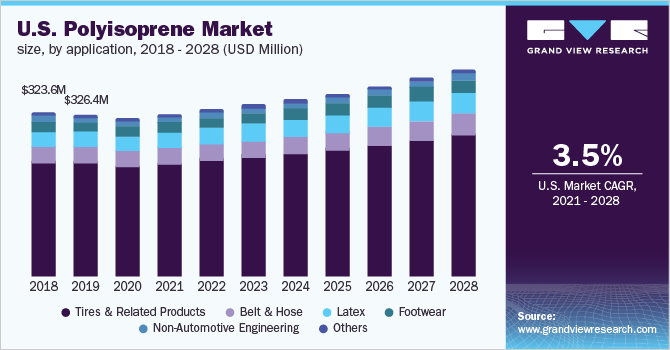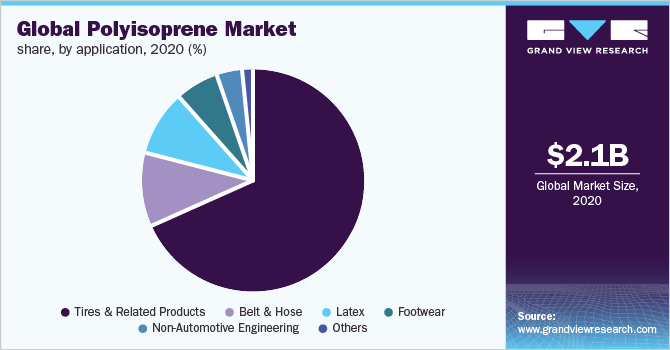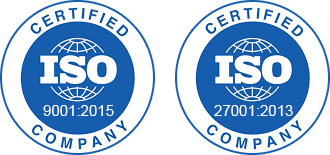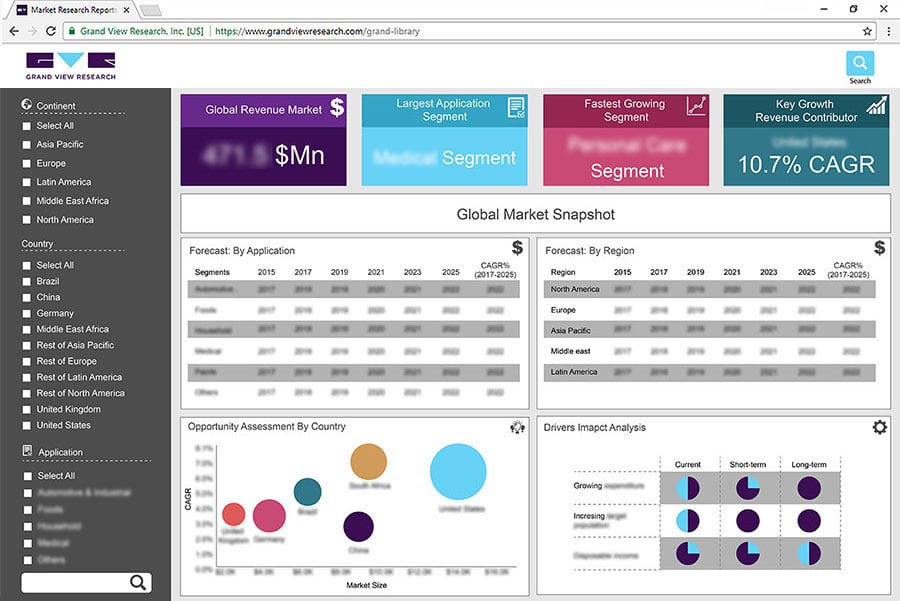- Home
- »
- Plastics, Polymers & Resins
- »
-
Polyisoprene Market Size & Share Report, 2021-2028GVR Report cover
![Polyisoprene Market Size, Share & Trends Report]()
Polyisoprene Market Size, Share & Trends Analysis Report By Application (Tires & Related Products, Latex, Footwear, Non-automotive Engineering, Belts & Hose), By Region (Europe, APAC), And Segment Forecasts, 2021 - 2028
- Report ID: GVR-4-68038-359-1
- Number of Report Pages: 55
- Format: PDF, Horizon Databook
- Historical Range: 2017 - 2019
- Forecast Period: 2021 - 2028
- Industry: Bulk Chemicals
Report Overview
The global polyisoprene market size was valued at USD 2.15 billion in 2020 and is expected to grow at a compound annual growth rate (CAGR) of 4.1% from 2021 to 2028. The growth of the market is directly proportional to the growth of the synthetic rubber industry. Polyisoprene producers are affected by the trends in the tire industry and other related synthetic rubber products. Factors, such as the growing demand for elastomers in the automotive, industrial, footwear, and medical industry, are expected to drive the demand for polyisoprene. Rising usage of polyisoprene in surgical gloves is also expected to propel industry growth.

Polyisoprene rubber blended with other ingredients, such as oils, fillers, cross linking agents, and antioxidants, provides good fatigue resistance, outstanding strength, and an excellent compression set. In addition, polyisoprene is waterproof, offers a large stretch ratio, and has high resilience, which is expected to fuel its demand over the forecast period.
To cater to the rising demand, end-use sectors in the automotive segment are simultaneously upgrading automobiles to improve energy efficiency. Polyisoprene is used in a wide range of applications including conveyor belts, tires, hoses, molded rubber, springs, bearings, drive couplings, adhesives, and anti-vibration mounts.
Application Insights
The tires& related product application segment dominated the market with a revenue share of more than 68% in 2020. Polyisoprene provides uniformity and higher flow properties allowing tire manufacturers to meet the high standard of steel-reinforced radial tires. The growing consumption of polyisoprene in tires, particularly green tires, is expected to drive the tires and polyisoprene industry expansion. Furthermore, the increasing demand for EVs and the rising disposable income levels are anticipated to fuel the market growth during the forecast period.

The growing product usage in the healthcare, coatings and adhesive sectors is expected to stimulate polyisoprene demand for the production of latex for medical gloves. This is due to the fact that isoprene-based latex exhibits good tear strength and tear resistance. Moreover, rising awareness about contagious diseases, such as COVID-19, is anticipated to drive the market for polyisoprene in the medical sector. The spread of the Delta variant of COVID-19 has resulted in increased demand for medical equipment like medical gloves, septum, and injection sites for fluid transfer, which will also drive the market.
Polyisoprene offers several benefits over natural rubber, such as higher tensile and shear strength, which has resulted in the utilization of polyisoprene in safety footwear as well as hoses that are used in the oil & gas, construction, steel, and chemical manufacturing industries. The oil and gas sector has witnessed a rising demand for natural gas due to carbon footprints created by petrol & diesel-powered vehicles. The increasing investment and exploration activities for natural gas and steel manufacturing are expected to boost the market growth over the forecast period.
Regional Insights
Europe dominated the global market in 2020 and accounted for more than 50.5% of the global revenue share. This is due to the presence of well-established automotive and oil & gas sectors in the region. The construction sector in Germany has witnessed significant growth owing to the rising demand for real estate and low borrowing costs, and this trend is expected to continue over the forecast period.
Asia Pacific is expected to witness a significant CAGR over the forecast period owing to the rapid growth of end-use industries including automotive, medical, and construction in China, India, and Indonesia. In addition, increasing vehicle production in countries like China, Indonesia, Japan, South Korea, and India is expected to be a major driver for market growth.
North America is expected to have significant growth over the forecast years on account of the high vehicle production, mainly in Mexico and the U.S., along with heavy R&D by domestic companies aimed at product innovation and increasing its application scope. Middle East & Africa is also expected to have a prominent market share in the future due to the growing construction sector coupled with rapid industrialization.
Key Companies & Market Share Insights
The market is highly competitive due to the presence of several regional and global players. Leading market players compete based on their product development capabilities and new technologies used in product formulations. Established oil & gas companies, such as ENEOS, are implementing different strategic initiatives to enter into the elastomer manufacturing business. For instance, in May 2021, ENEOS Corp. entered into an agreement with JSR Corp. to acquire its elastomers business. ENEOS is expected to acquire all the shares of the new company on April 1, 2022. Some of the prominent players operating in the global polyisoprene market are:
-
Zeon Corp.
-
JSR Corp.
-
PJSC Nizhnekamskneftekhim
-
The Goodyear Tire & Rubber Company
-
Kuraray Co., Ltd.
Polyisoprene Market Report Scope
Report Attribute
Details
Market size value in 2021
USD 2.22 billion
Revenue forecast in 2028
USD 2.94 billion
Growth rate
CAGR of 4.1% from 2021 to 2028
Base year for estimation
2020
Historical data
2017 - 2019
Forecast period
2021 - 2028
Quantitative units
Volume in kilotons, revenue in USD million/billion, and CAGRfrom 2021 to 2028
Report coverage
Volume forecast, revenue forecast, company profiles, competitive landscape, growth factors, and trends
Segments covered
Application, region
Region scope
North America; Europe; Asia Pacific; Central & South America; Middle East & Africa
Country scope
U.S.; Germany; India; China; Japan
Key companies profiled
PJSC Nizhnekamskneftekhim; Zeon Corp.; JSR Corp.; The Goodyear Tire & Rubber Company; Kuraray Co., Ltd.
Customization scope
Free report customization (equivalent to up to 8 analysts’ working days) with purchase. Addition or alteration to country, regional, and segment scope.
Pricing and purchase options
Avail customized purchase options to meet your exact research needs. Explore purchase options
Segments Covered in the ReportThis report forecasts revenue growth at global, regional, and country levels and provides an analysis of the latest industry trends in each of the sub-segments from 2017 to 2028. For the purpose of this study, Grand View Research has segmented the global polyisoprene market report on the basis of application and region:
-
Application Outlook (Volume, Kilotons; Revenue, USD Million, 2017 - 2028)
-
Tires & Related Products
-
Latex
-
Footwear
-
Non-automotive Engineering
-
Belts & Hose
-
Others
-
-
Regional Outlook (Volume, Kilotons; Revenue, USD Million, 2017 - 2028)
-
North America
-
U.S.
-
-
Europe
-
Germany
-
-
Asia Pacific
-
China
-
India
-
Japan
-
-
Central & South America
-
Middle East & Africa
-
Frequently Asked Questions About This Report
b. The global Polyisoprene market size was estimated at USD 2.15 billion in 2020 and is expected to reach USD 2.22 billion in 2021.
b. The global Polyisoprene market is expected to grow at a compound annual growth rate of 4.1% from 2021 to 2028 to reach USD 2.94 billion by 2028.
b. Europe dominated the Polyisoprene market with a share of 50.76% in 2020. This is attributable to growth in the automobile sector and government focus to reduce the vehicular emission by promoting electric vehicles is creating more demand for tires and related products in the region.
b. Some key players operating in the Polyisoprene market include Zeon Corporation, JSR Corporation, PJSC "Nizhnekamskneftekhim" , The Goodyear Tire & Rubber Company, and KURARAY CO., LTD.
b. Key factors that are driving the market growth include increasing demand in automobile industry, medical, and footwear industry across the world.
Share this report with your colleague or friend.
![gvr icn]()
NEED A CUSTOM REPORT?
We can customize every report - free of charge - including purchasing stand-alone sections or country-level reports, as well as offer affordable discounts for start-ups & universities. Contact us now
![Certified Icon]()
We are GDPR and CCPA compliant! Your transaction & personal information is safe and secure. For more details, please read our privacy policy.
We are committed towards customer satisfaction, and quality service.
"The quality of research they have done for us has been excellent."





